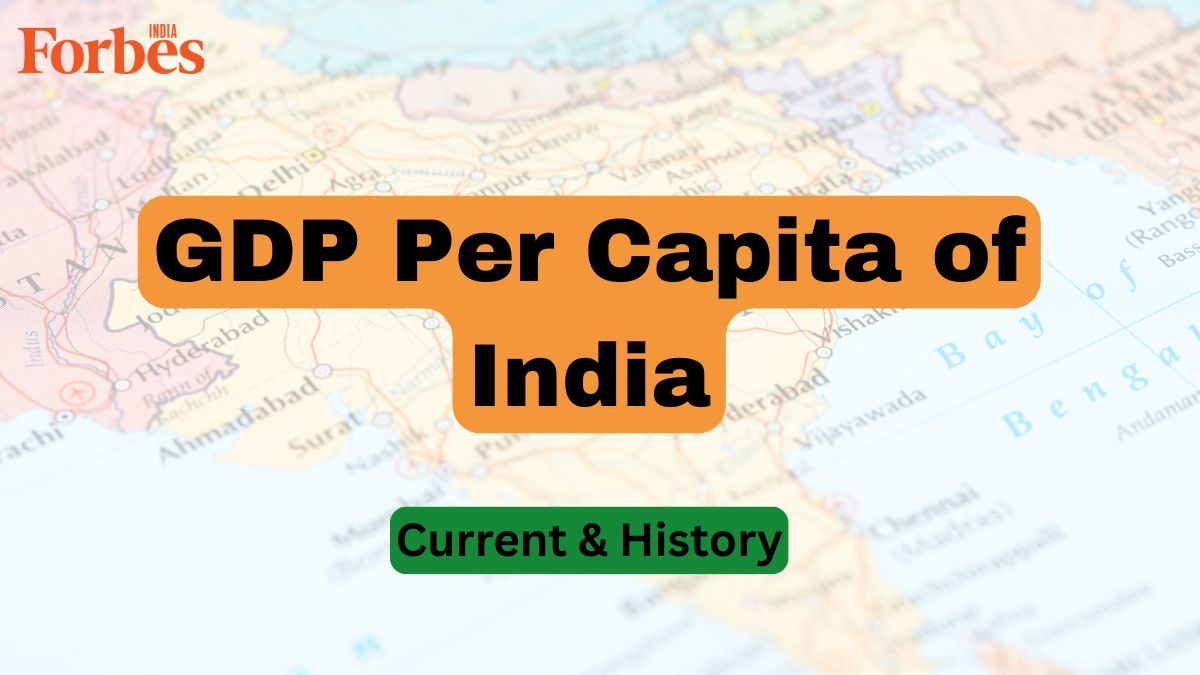This is where Gross Domestic Product (GDP) per capita acts as a key indicator of overall economic growth. India’s GDP per capita has shown significant growth in recent years, reaching over $2,310 in 2024. This figure represents approximately 18 percent of the world’s average, indicating that while India has made progress, there is still room for improvement compared to global standards.
In this article, we’ll discuss what GDP per capita is, its current standing, historical data, and what these numbers mean for the Indian economy and its future.
GDP per capita provides a clear picture of the country’s income levels and purchasing power. There are two ways to look at this metric: Nominal GDP per capita reflects the economy’s size using current prices and exchange rates. GDP per capita, based on purchasing power parity (PPP), accounts for the cost of living, purchases, and other price differences. Together, it helps you to assess how much wealth is distributed among its population. A higher GDP per capita generally indicates better living standards and economic prosperity.
Nominal GDP per capita is calculated by:

The metric is widely used to compare economic performance across the globe. Nations with strong industrial and service sectors, such as the United States and China, often have high GDP per capita, whereas densely populated or developing economies may have lower figures. For India, this number provides insights into economic growth, making it a crucial factor in understanding the country’s progress.
Current status of India’s GDP per capita
The current outlook for India’s GDP per capita is positive. The International Monetary Fund (IMF) expects India’s real GDP growth to be 6.5 percent this year. As of the latest data for Q3 FY2024-25, India’s real GDP grew by 6.2 percent, indicating a rapid recovery from the 5.6 percent growth in the previous quarter.
The Indian economy is showing strong momentum, with GDP growth for FY2023-24 recorded at 9.2 percent—the highest in 12 years, excluding the post-COVID rebound. The IMF also stated that India’s GDP per capita is estimated to reach nearly $2,880 in 2025, positioning India as one of the fastest-growing global economies due to stable commodity prices, cooling food inflation, and normal monsoons. With steady growth projections, this indicates a rising GDP per capita, reflecting improved income levels and economic progress.
Factors influencing the GDP per capita of India
Many elements shape India’s GDP per capita. It’s a mix of factors, including the number of people, the cost of things, the skill level of the workforce, and more.
- Population: A larger population can dilute the GDP per capita if economic growth doesn’t keep pace.
- Inflation: Rising prices can negatively impact PPP and affect overall economic output, making stable prices ideal for GDP per capita.
- Education and awareness: A well-educated population is generally more productive and innovative, which helps boost economic growth.
- Government policies: Policies regarding trade, investment, and regulation can either enhance or lessen economic activity.
Past GDP per capita in India
Here’s a glimpse of the last decade’s data on the Indian economy, sourced from the World Bank & International Monetary Fund
| Financial Year |
GDP per capita (in $) |
Annual GDP Growth Rate (in %) |
| 2025 (projected) |
$2,880 |
6.2% |
| 2024 |
$2,697 |
7% |
| 2023 |
$2,497 |
7.2% |
| 2022 |
$2,366 |
7.00% |
| 2021 |
$2,250 |
9.05% |
| 2020 |
$1,915 |
-5.83% |
| 2019 |
$2,050 |
3.87% |
| 2018 |
$1,974 |
6.45% |
| 2017 |
$1,957 |
6.80% |
| 2016 |
$1,714 |
8.26% |
| 2015 |
$1,590 |
8.00% |
Where does India rank today?
India, despite being the fifth-largest global economy, ranked 141st in the IMF’s GDP per capita report in 2025. With a projected GDP per capita of $2,940 this year, India’s economic output per person remains significantly lower than that of other countries.
The main reason behind this ranking is the 1.4 billion population, which dilutes its overall GDP per capita metric. However, India has made steady progress over the years—the growth rate of its GDP per capita jumped from -6.7 per cent in 2020 to nearly 9 per cent in 2021, during the pandemic, indicating a strong market potential and healthy economic growth.
Another challenge is income inequality in India, where at least 10 percent of the population holds the majority of the country’s wealth. Today, India’s GDP per capita is approximately 18 percent of the world’s average, but it still has a considerable way to go in the global market. There’s clearly a need for further economic reforms and inclusive growth strategies in the country.
Frequently Asked Questions (FAQs)
Where does India rank in the global economy?
As the fifth-largest economy in the world by nominal GDP per capita, India follows the US, China, Germany, and Japan. In terms of purchasing power parity (PPP), India ranks third, underscoring its substantial consumer market.
What is India’s current GDP per capita in PPP?
According to the latest data, India’s GDP per capita in PPP is expected to reach $9,740 in 2025, taking into account the cost of living and inflation differences.
Which is the state with the highest GDP in India?
Maharashtra has the highest GDP in India, largely due to its strong industrial base, robust financial sector, and thriving entertainment industry, particularly in Mumbai, which serves as India’s commercial capital.


